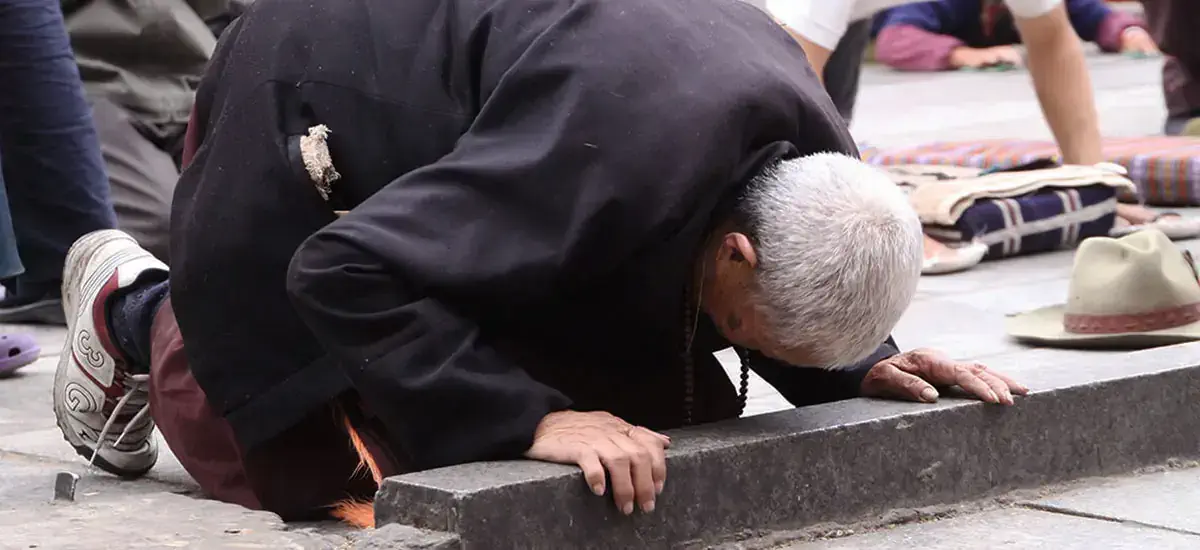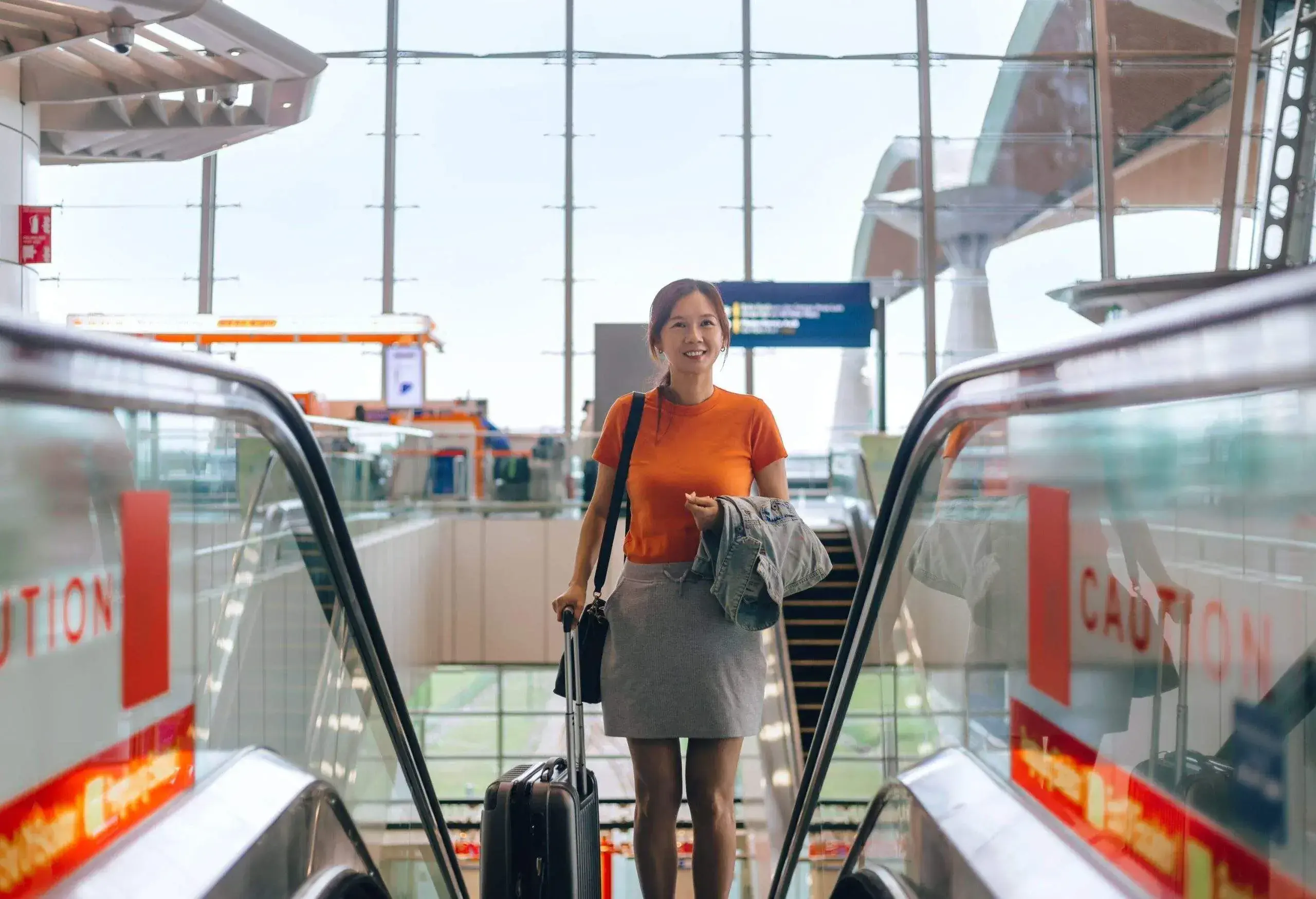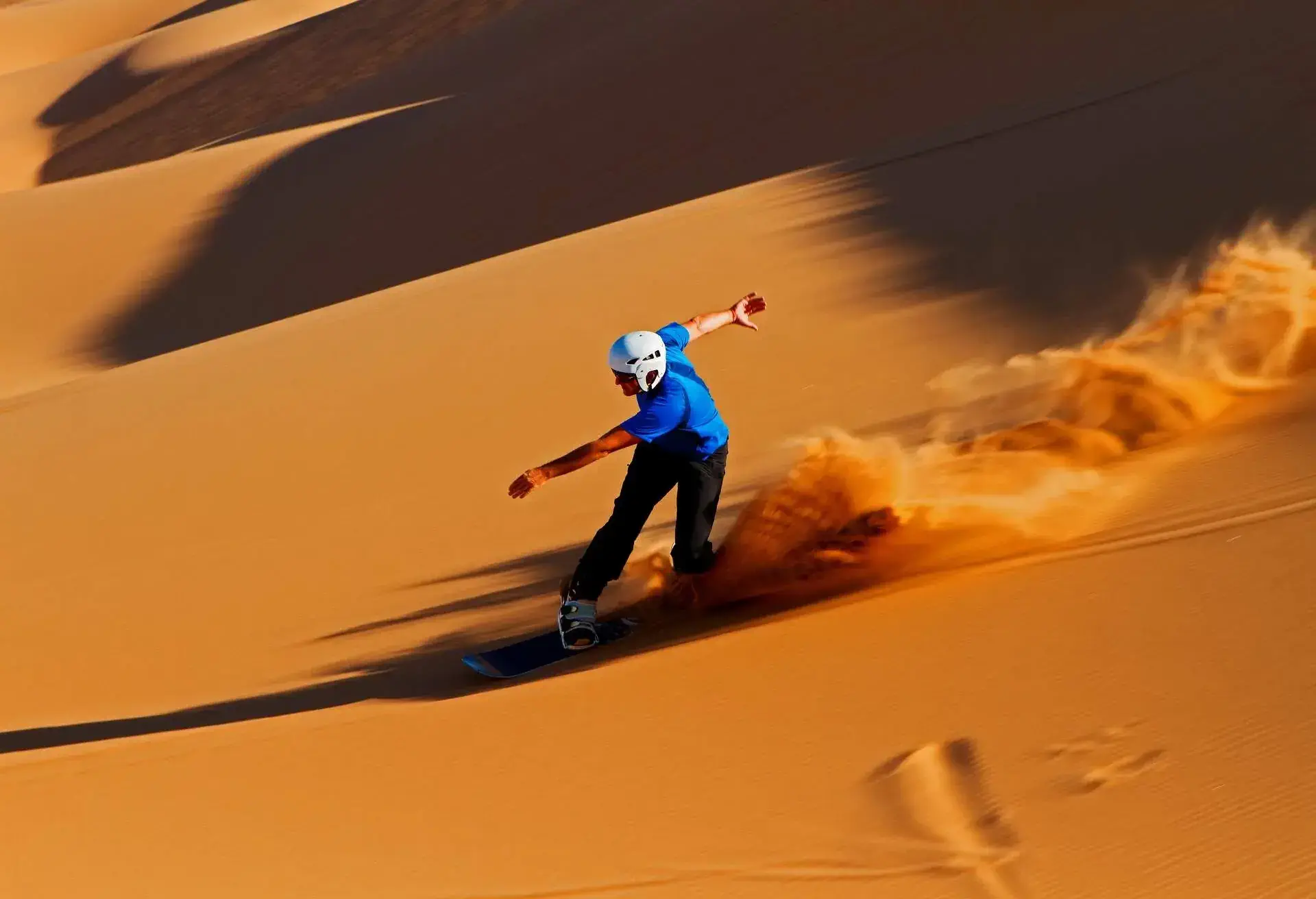When most people think of Lhasa, Brad Pitt in his role as Heinrich Harrer, confidant to the Dalai Lama in the film ‘Seven Years in Tibet’ is what first springs to mind; either that or “Ummmm, where?”. And that’s no surprise, really. Lhasa is one of the least visited destinations in the world, not least because simply making it to the spiritual home of Buddhism is a Herculean effort in itself. And while the Tibet Autonomous Region has its faults and can at times even leave you feeling uncomfortable every moment spent here is worthwhile – especially for those who want to learn something about Buddhism and the so-called Cultural Revolution right at the source
Lhasa sneaks up on you a bit unexpectedly. If you arrive by plane from Nepal or China, the city just looks like a white speck on a topographical map from above. For those who come by car, via the Friendship Highway from Nepal or by train from Xining in China, the city is like an oasis to someone lost in the desert; a tall glass of water indeed.
All around it, everything is brown and muted, the earth lumpy and dry. No grass, hardly a tree in sight, the only respite an occasional flash of deep blue from a lake. It’s hard to imagine a centre of faith and life in the midst of this hostile landscape.
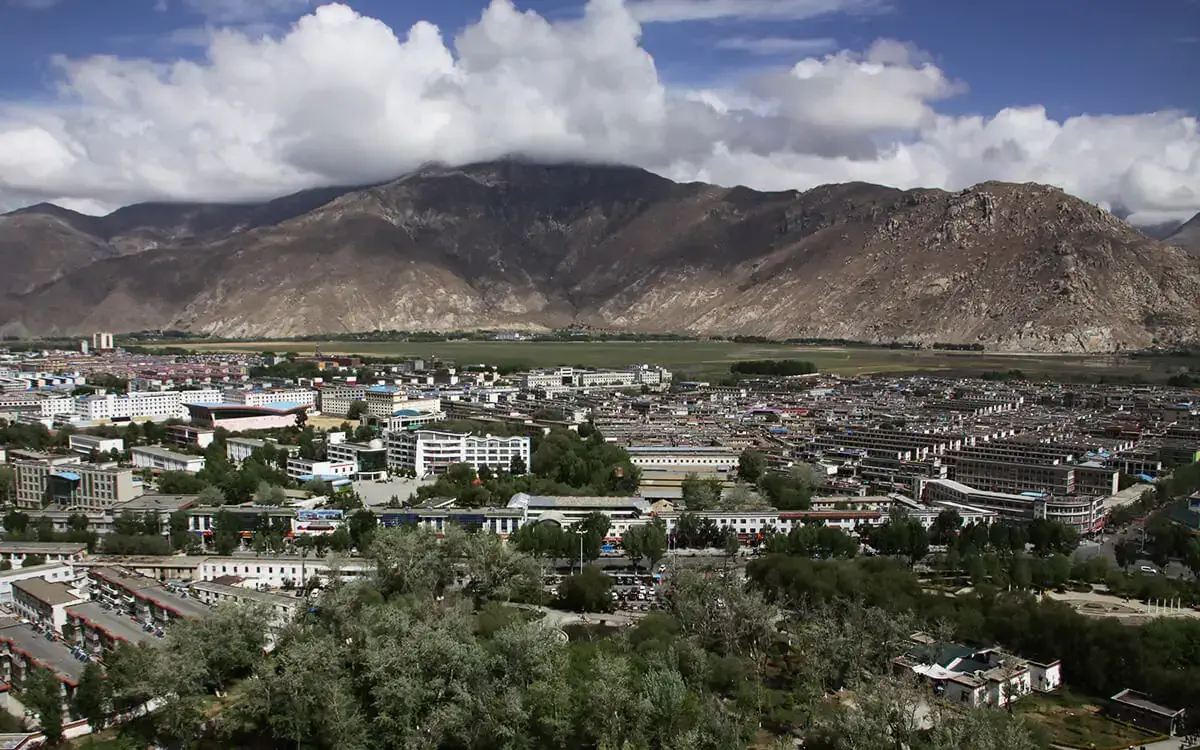
In fact, here, in one of the highest inhabited places in the world, is about as close as you can get to touching the sky while remaining in civilisation. In a literal sense, because nine of the world’s 14 highest mountains (all standing above 8,000 metres) are here in the Himalayas; including Mount Everest, named Qomolangma by the Tibetans, which stands at 8848 meters the highest mountain in the world.
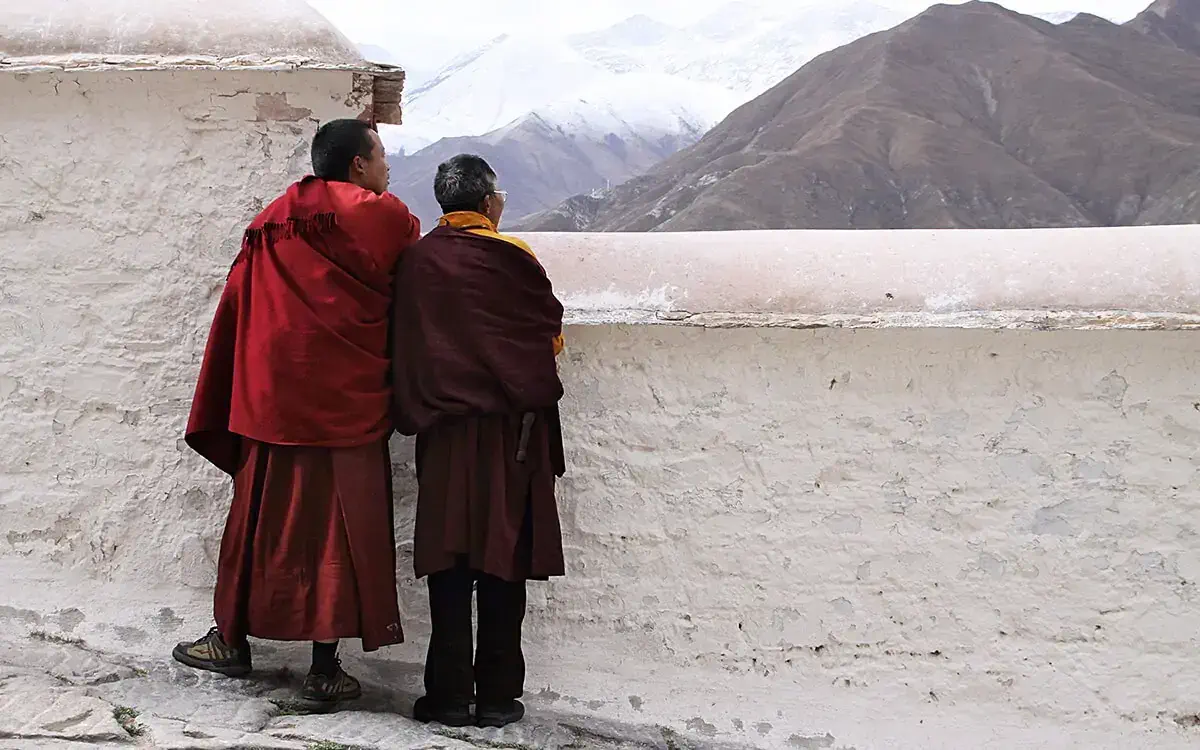
In a more metaphorical sense, Lhasa translates as ‘ Land of the Gods’, and as the spiritual home of Tibetan Buddhism its proximity to the heavens is fitting. It’s not just Lhasa’s altitude, but also the isolation of its location, hidden between the flanks of the great mountains, that has always made it seem somewhat unattainable.
The official travel permit
Today, Lhasa’s sense of “unattainability” isn’t helped by the paperwork either. For a trip to the Tibet Autonomous Region, a special permit is required, a Tibet Travel Permit, which can only be obtained through an accredited travel agency that has been approved by the Tibetan Tourist Board (see below for further details).
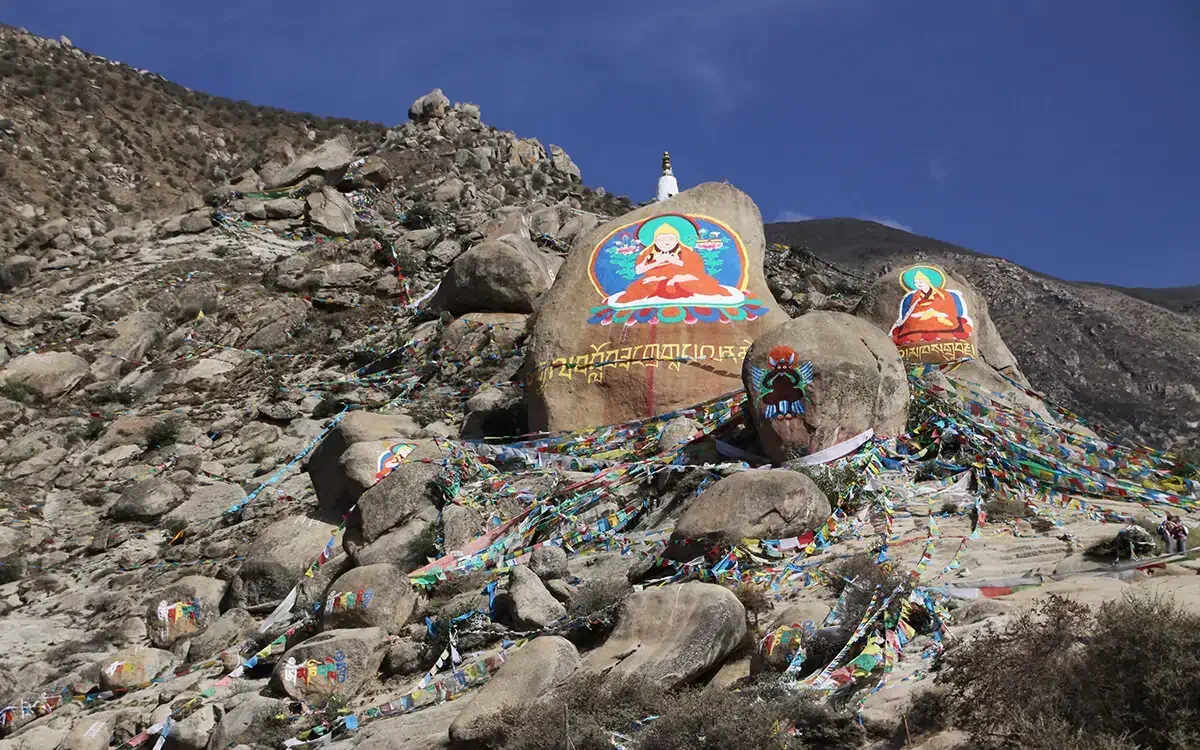
Accommodation in Lhasa from £15
Example flights from the UK to Kathmandu:
1
The conditions for entry change as frequently as the weather does during a British summer’s day. Permits are generally not issued to solo travellers on principle; sometimes it’s easiest to obtain a permit as a couple, sometimes as a group of five; sometimes a mix of different nationalities is required; sometimes you get the permit on the first attempt at other times it may take a couple of tries, and sometimes, despite principles some solo travellers have been allowed to join a larger group. In addition, the accredited travel agencies are required to organise tour guides and an itinerary for the entire group, which you will be a part of. Unfortunately, a trip to Tibet cannot be undertaken on your own timetable and the only way to see it is with one of these organised packages; which comes with a hefty price tag. Being autonomous in Autonomous Tibet is an impossibility, but the number of things that make the trip worthwhile far outweigh the negatives.
Lhasa, 11.50 am | Something doesn’t feel quite right
Two traits that are normally associated with Buddhism permeate the cityscape here: patience and composure. On closer inspection though, rather than making you feel that you’ve reached a spiritual destination, they inform you of what is expected in Lhasa.
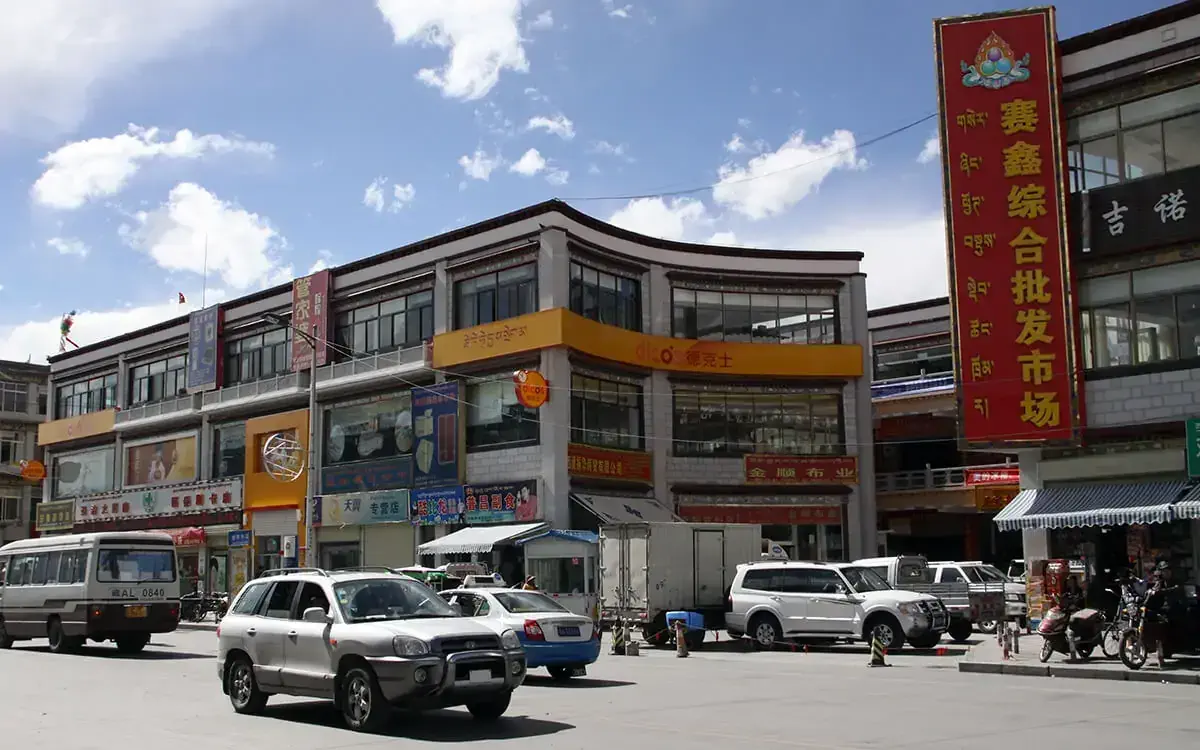
You’ll notice a certain intangible something as you cast your eyes over the city; looking through, rather than at, the rather dreary glass and concrete façades of the main shopping streets, past the heavily-armed Chinese soldiers who have been stationed here, amongst the bazaars, flat-roofed buildings and Tibetans spinning their prayer wheels in the midday sun, since the occupation of 1949-50.
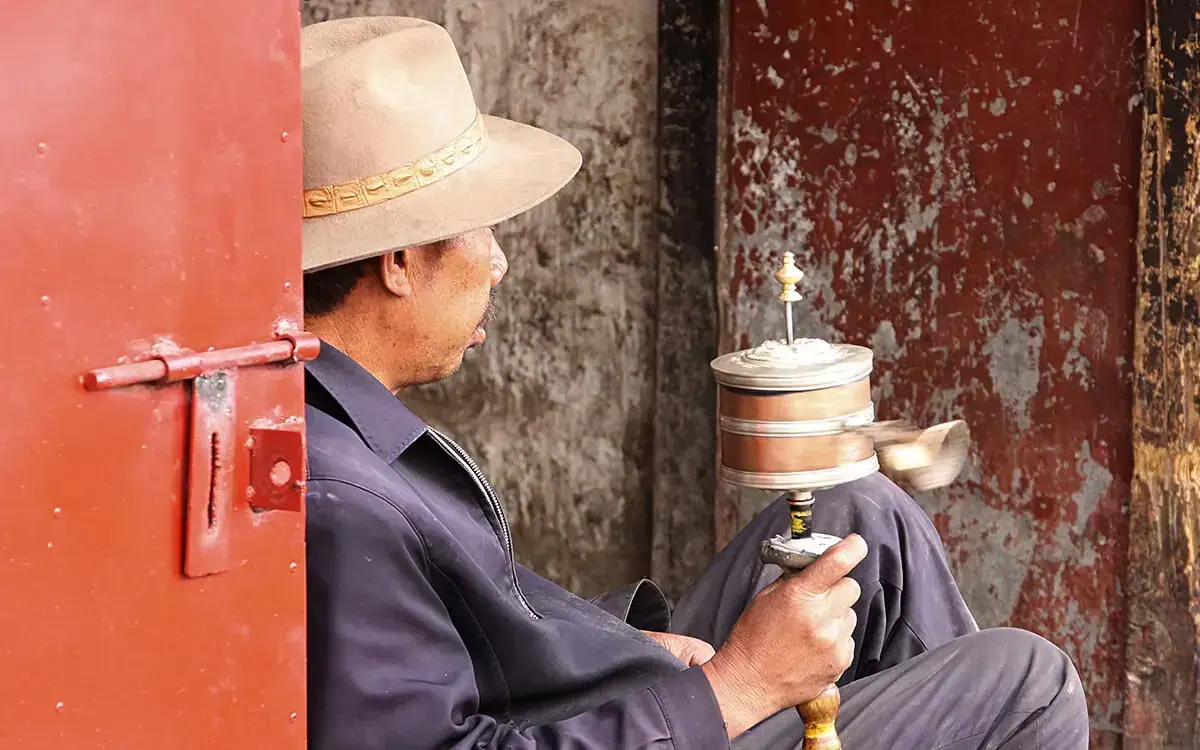
From the terraces of the House of Shambhala Hotel’s restaurant, you can observe the city from above. It doesn’t take long to figure out that things aren’t entirely right in Lhasa.
Lhasa, 1:15 PM | Time to see the city’s greatest tourist attraction
After lunch, head to the Potala Palace.The former winter residence of the 14th Dalai Lama is built into the mountainside, 130 metres above the city. Its red and white facade stands defiantly as a reminder of the political backdrop that forced the Dalai Lama to flee to Dharamsala and permanent exile in March 1959, after the brutal suppression of Tibetan demonstrations for the freedom and independence of their country.
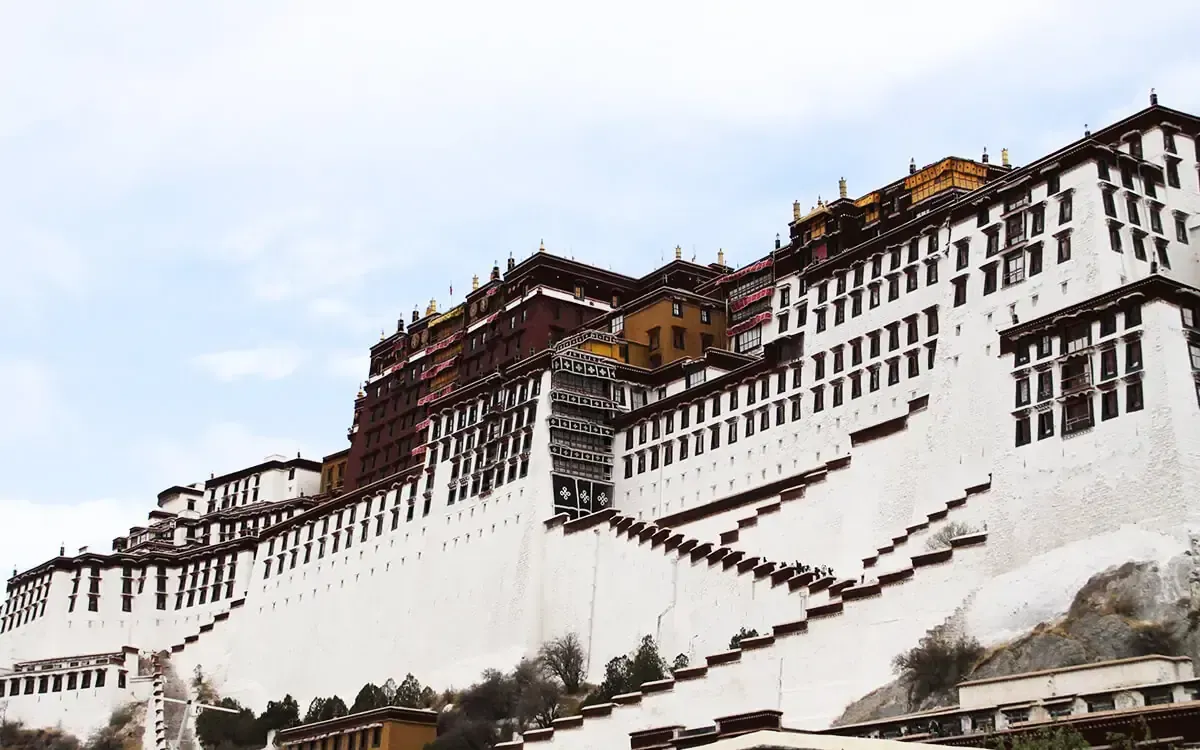
It is a miracle that the Potala still stands, unlike many other Tibetan cultural monuments which were destroyed by the Chinese during the so-called Cultural Revolution. Since 1994, the palace, with its 999 rooms spread over 13 floors, has been a UNESCO World Heritage Site and is the city’s most important landmark.
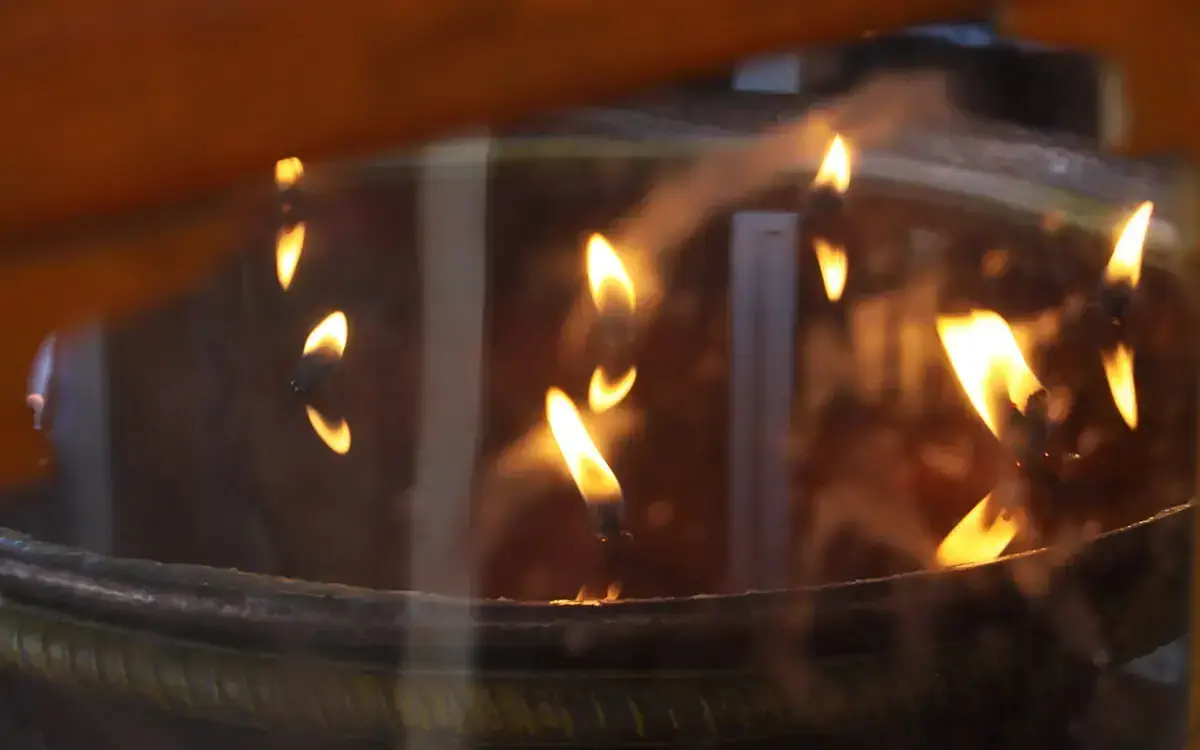
At its heart, you can’t help but notice the heavy smell of incense sticks and butter-lamps burning, as well as the incessant murmur of monks praying. Everywhere you see countless Buddhas in an array of different poses; every posture and accompanying hand gesture relating to a different story and thematic meaning.
Lhasa, 3:40 PM | Observing Buddhist prayers while under observation
The splendour of the Potala Palace’s facade is best seen from the centrally located Barkhor Square, which also houses the golden-roofed Jokhang Temple, Tibetan Buddhism’s most important sanctuary and place of a pilgrimage.
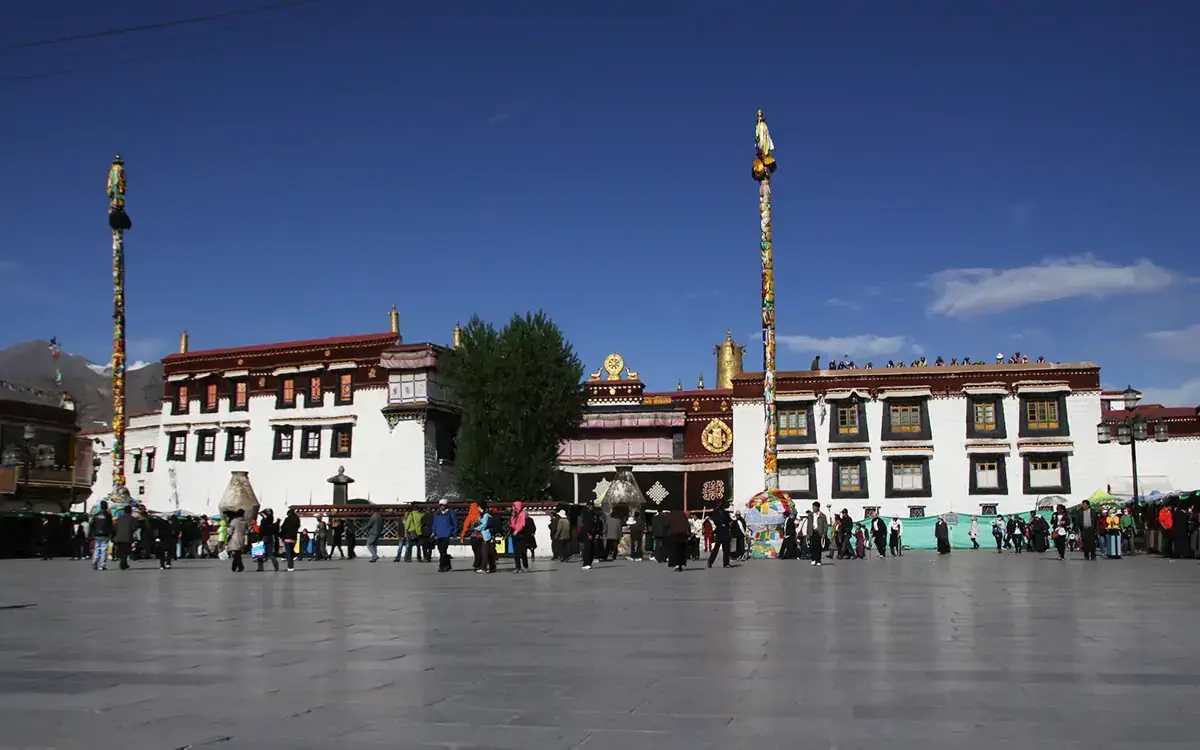
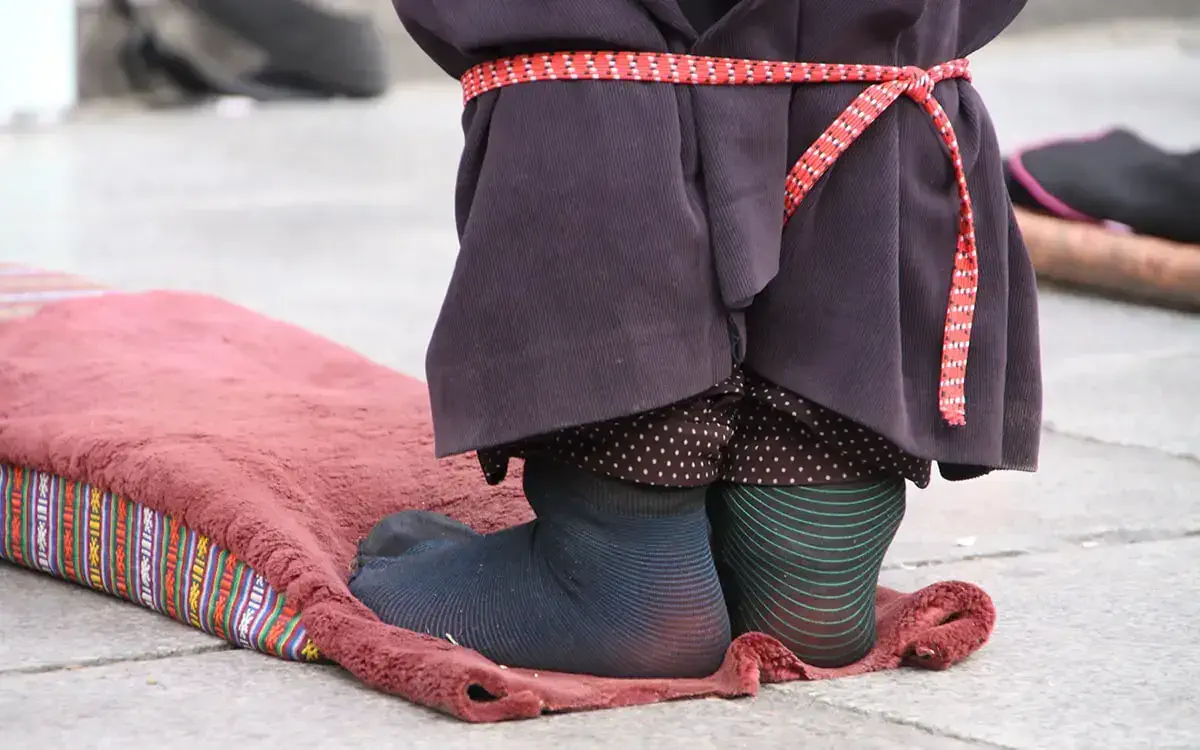
1
1
You’ll have some free time in the afternoon and it’s really worthwhile finding a quiet place to watch the square from. Observing the faithful praying before the main entrance of the temple repeating a series of movements over and over again. First kneeling, then lying prone on their stomachs before extending their fingertips out before them. As you watch the meditative repetition a new understanding of the peacefulness, quietude and introspection of Buddhist faith dawns on you, further exposing the absurdity of the armed guards posted along the roofs overlooking the square.
Keep track of your travel bookings! If you want to know how to keep a concise overview of saved search queries or your booked flights, hotels and car hires, read more about KAYAK Trips!
Lhasa, 5 pm | Finding out what constitutes a heated debate in Lhasa
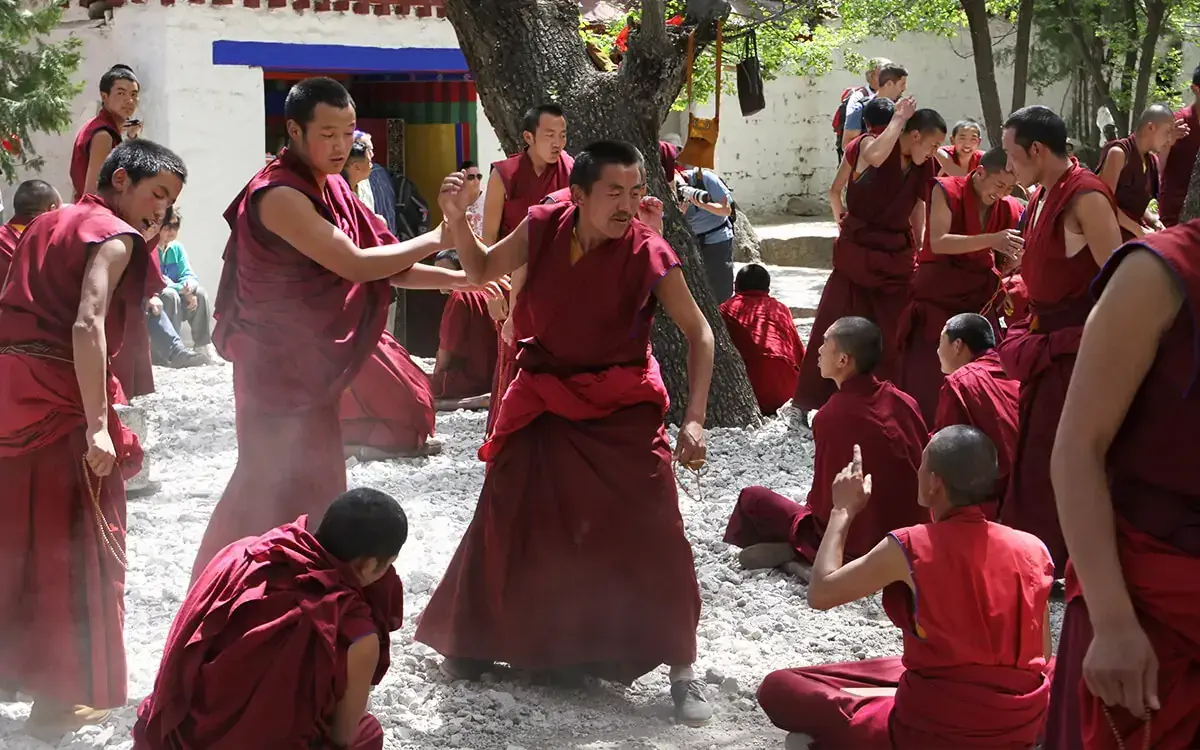
After the serenity of Jokhang Temple, Sera Monastery comes as a bit of a shock. Even from afar you can hear a cacophony of Tibetan. In the inner courtyard of the main temple, about a hundred Buddhist monks sit in saffron-colored garments, arguing loudly, clapping their hands at each other violently, and lunging at each other with such ferocity you’re someone’s about to get their ears boxed.
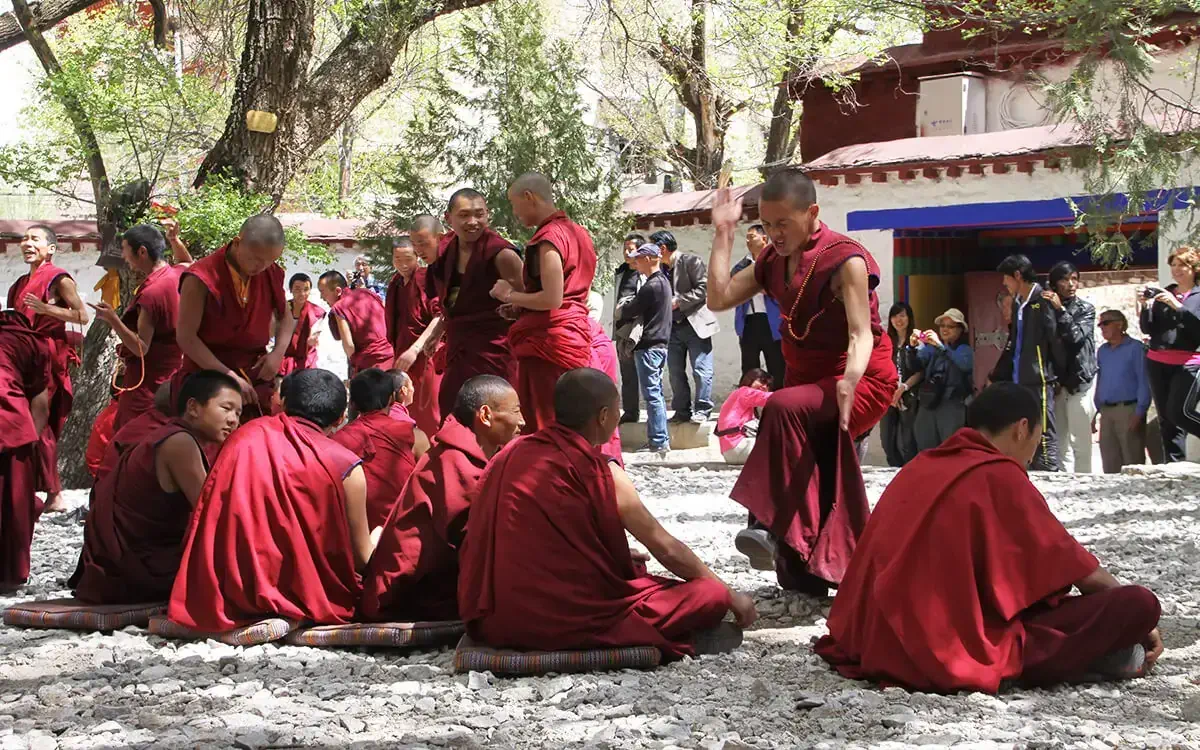
But what seems to be a mix of hand-to-hand combat and verbal argument is, in reality, a form of debate practised by the monks here, that is so layered as to be an art form in its own right. The physical and oral elements are sometimes performed seriously, sometimes while laughing, sometimes emphatically, and sometimes aggressively but combine to create a platform where opinions are allowed to live, fully imbued with the emotions attached to them.
Lhasa, 7:35 PM | Time for some dinner in the city centre
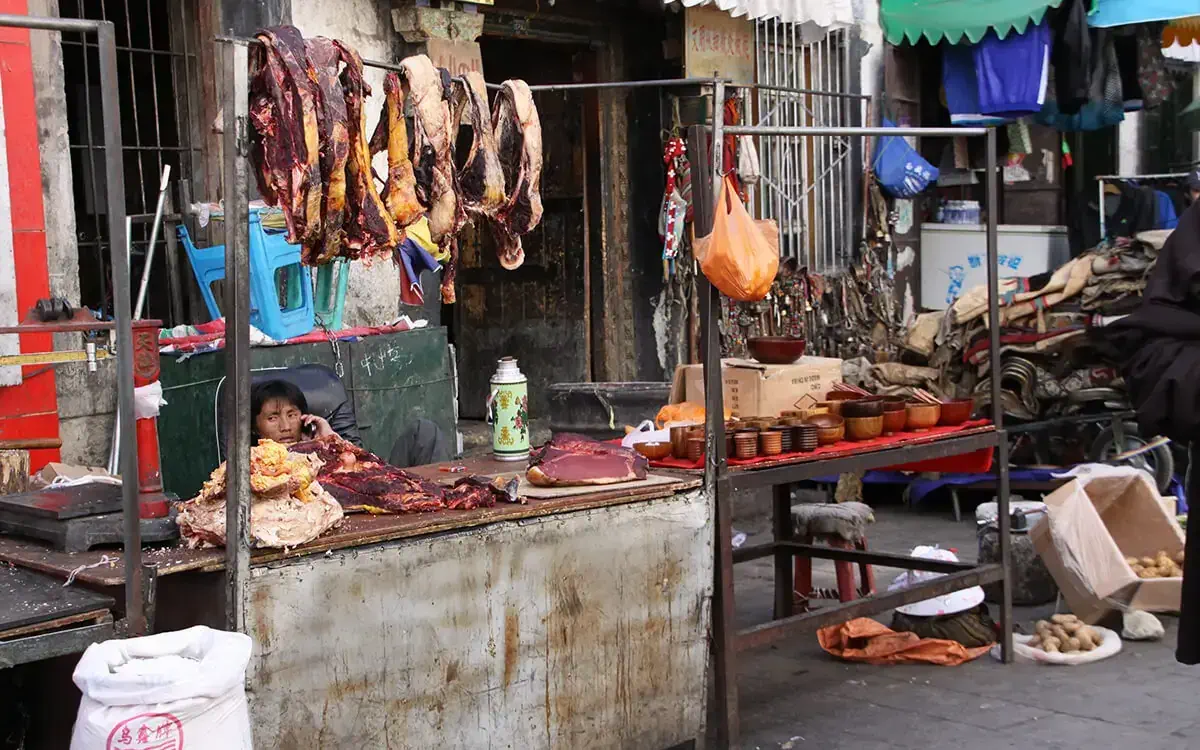
Spend the evening soaking up the evening atmosphere at one of the restaurants in the city centre, somewhere around Barkhor Square – for example, the exceptional Makye Ame Tibetan Restaurant, which also offers fantastic views of the Jokhang Temple. Another legendary viewing spot is the Snowland Hotel, which offers great food and a rooftop terrace with possibly the best panorama of the old town.
Lhasa, 9 am | Breaking your fast
The most important meal of the day is even more important this high up. In true Tibetan style, your day starts with sweet tea and either Thukpa, a rustic noodle soup typical of the region, or Tsampa, a mash of water and ground grain, said to lend almost legendary powers of endurance in the thin air of the high plateau.
If you want to eat with the locals in a traditional atmosphere ask your guide to take you to the Guang Ming Gang Qiong Tian ChaGuan tea house which is just a few meters north of the Snowland Hotel. If you craving excellent coffee, you will find the Greenhouse Café, a slightly hip joint, just around the corner.
Lhasa, 10.15 am |
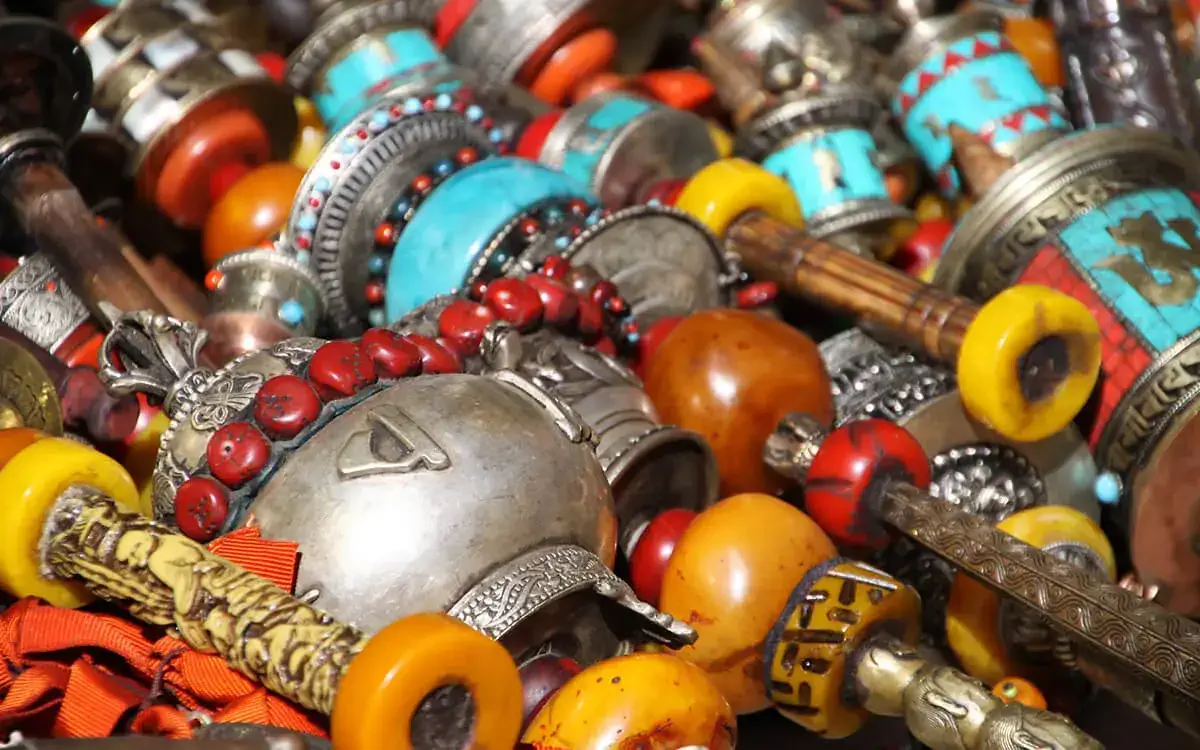
After breakfast it’s time to get moving, there’s a lot to pack into your second day. A visit to Norbulingka Palace, the Dalai Lamas Summer Residences and the Tibet Museum is next on your agenda, followed by a drive out to the nearby Chagpori Rock Carvings.
Lhasa, 1:05 pm | A light Lunch
A light meal is had at noon at somewhere like Father Vegetarian, a tiny but cosy restaurant, where young cooks are tasked with preparing vegetarian variations of traditional Tibetan cuisine.
Lhasa, 2.20 pm | A journey for the body and the mind
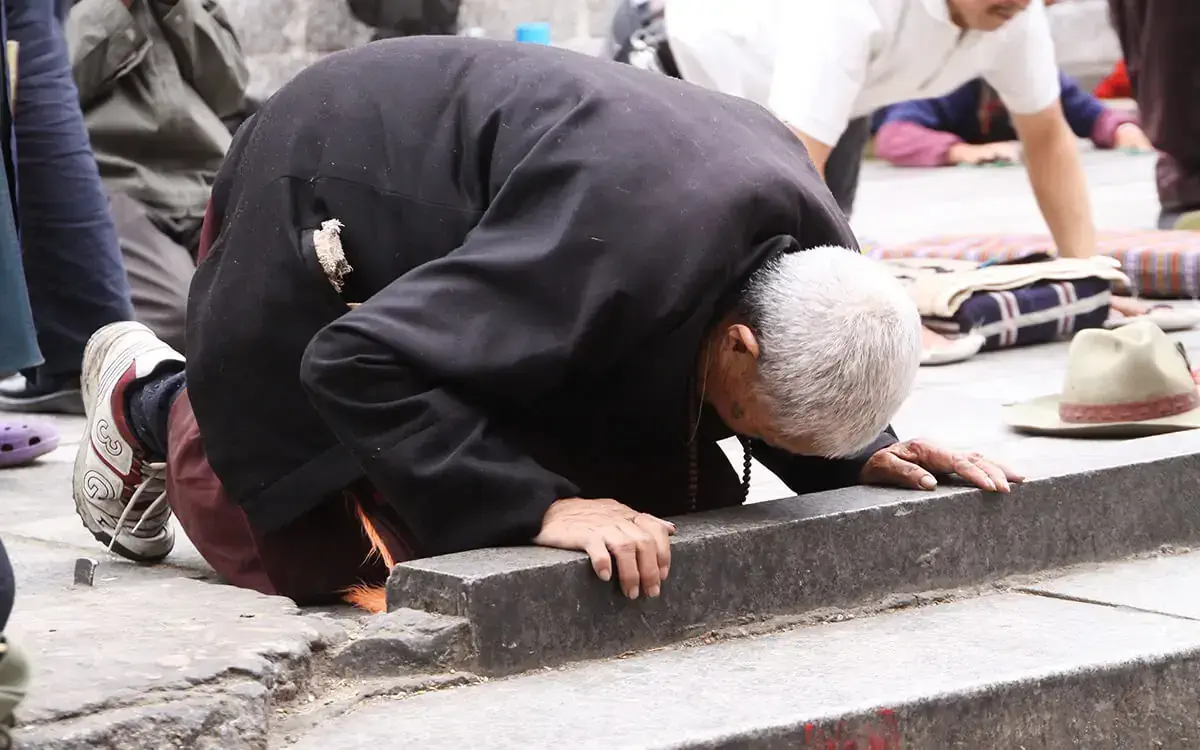
The afternoon is taken up with a visit to Drepung, a monastery complex jam-packed with numerous manifestations and reincarnations of sacred Buddhist figures, followed by a trip to see the Nietang Buddha. The most impressive figure found in Lhasa is 20 kilometres south-west of the city – the orange, blue and gold Nietang Buddha shines out from the cliff into which it is carved, breathtaking at almost ten meters of height.
A peaceful and soothing place for both mind and body and the perfect conclusion to a day full of spiritual sightseeing.
If you are looking for somewhere with more of a focus on food, shopping and general grooviness check out our 48 hrs in Brooklyn guide
Lhasa, 6.30 pm | A home-style meal
Keeping with the eating-in-a-traditional-atmosphere theme, good food and a fantastic atmosphere can be found at the Tibetan Family Kitchen, aptly names as eating here feels like you’ve been welcomed into the host’s own kitchen for a meal. If you are looking for something a little less rustic, Arirang Barbeque City offers an excellent and stylish Korean menu.
Lhasa, 9 pm | Downward facing dogs to aid digestion
There is a certain kind of visitor to Tibet that naively thinks they know the place owing to the fact they have extensively travelled in Nepal in India and find themselves perplexed that Tibet’s spiritual centre isn’t offering a wide range of yoga classes throughout the city in the evenings. In Lhasa time ticks a little slower.
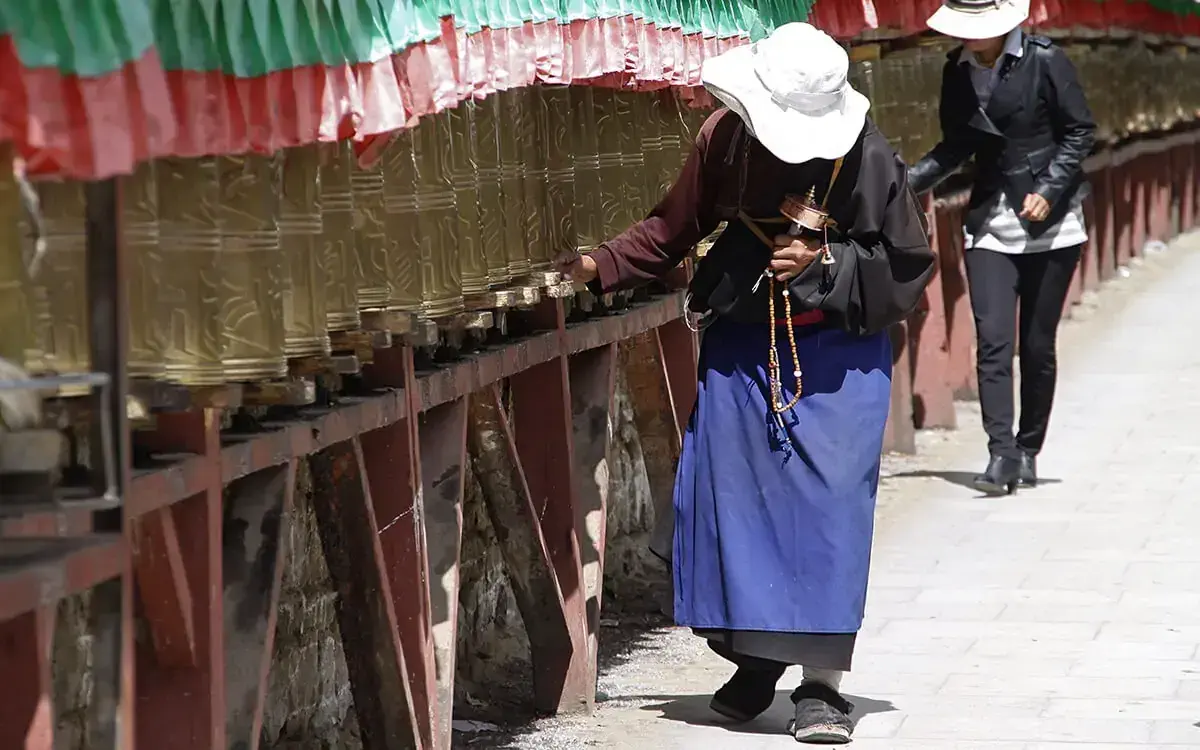
Having said that, the chance to practise your asanas is still there, but classes are a little rarer. Head to the Iridium Yoga Pilates Studio or St. Regis Lhasa Resorts for a guided practice. If you really want to get as traditional as you can, you can try knocking on the doors of Buddhist monasteries, but bring two things with you: time and patience, as, while visitors are sometimes allowed to join in there is absolutely no guarantee.
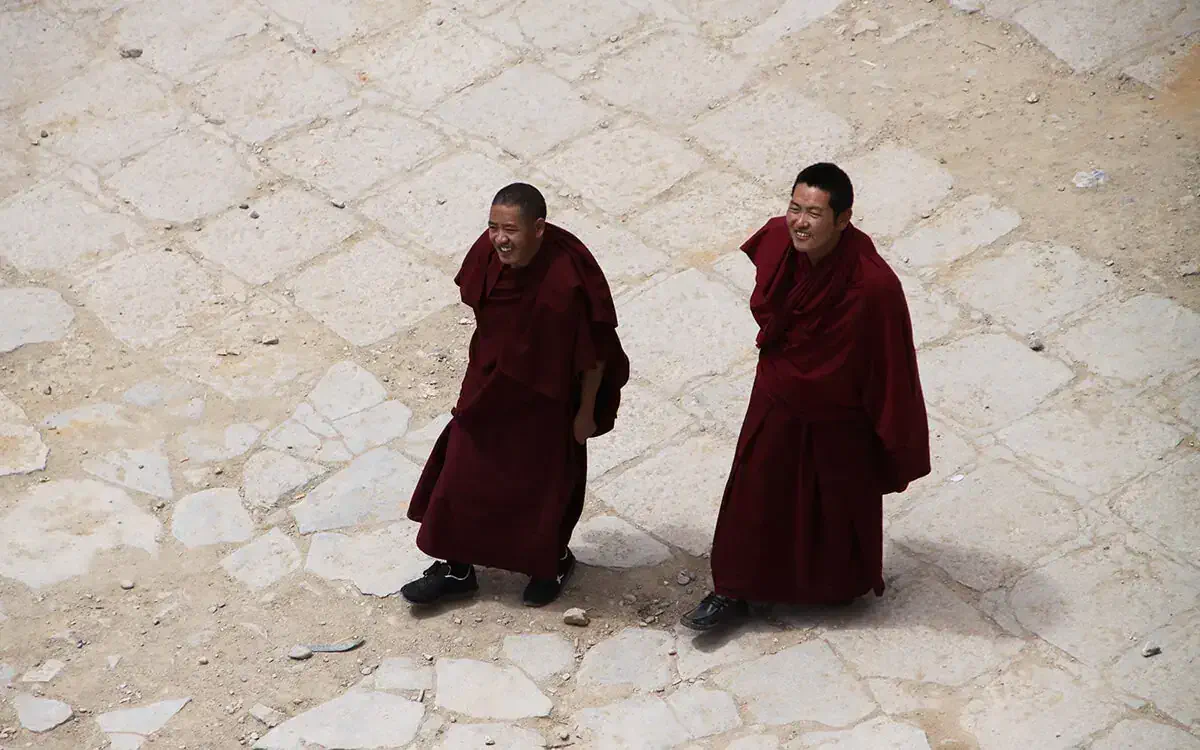
Accommodation in Lhasa from £15
What should you be aware of when travelling to Lhasa?
Travel advice from the Federal Foreign Office: “Trips to Tibet are essentially possible, but there are always temporary or travel restrictions, which are generally not publicly disclosed”.
- Foreigners need a special permit to tour the Tibet Autonomous Region. This special permit for tourists (also known as Tibet Travel Permit or Tibet Entry Permit) is issued by the Tibetan Tourism Office in Lhasa.
- The special permit can only be obtained through a travel agency accredited by the Tibetan Tourist Board. Technically, travel permits are not issued to single travellers. Travellers will be required to travel as a group (at least five persons) which will be put together by the accredited travel agency if the initial group is less than the required number.
- A scanned copy of your passport and your Chinese visa, as well as information on your profession, is required to obtain the special permit. According to the Tibetan Tourist Board, the processing time is generally between five and seven working days.
- The Tibetan Tourist Board accredited travel agency with whom you book will provide transportation and travel guides for the entire tour route.
- Mountaineers, journalists, business travellers and people visiting family are subject to specific provisions, which are to be requested in each case by the relevant Chinese authorities.
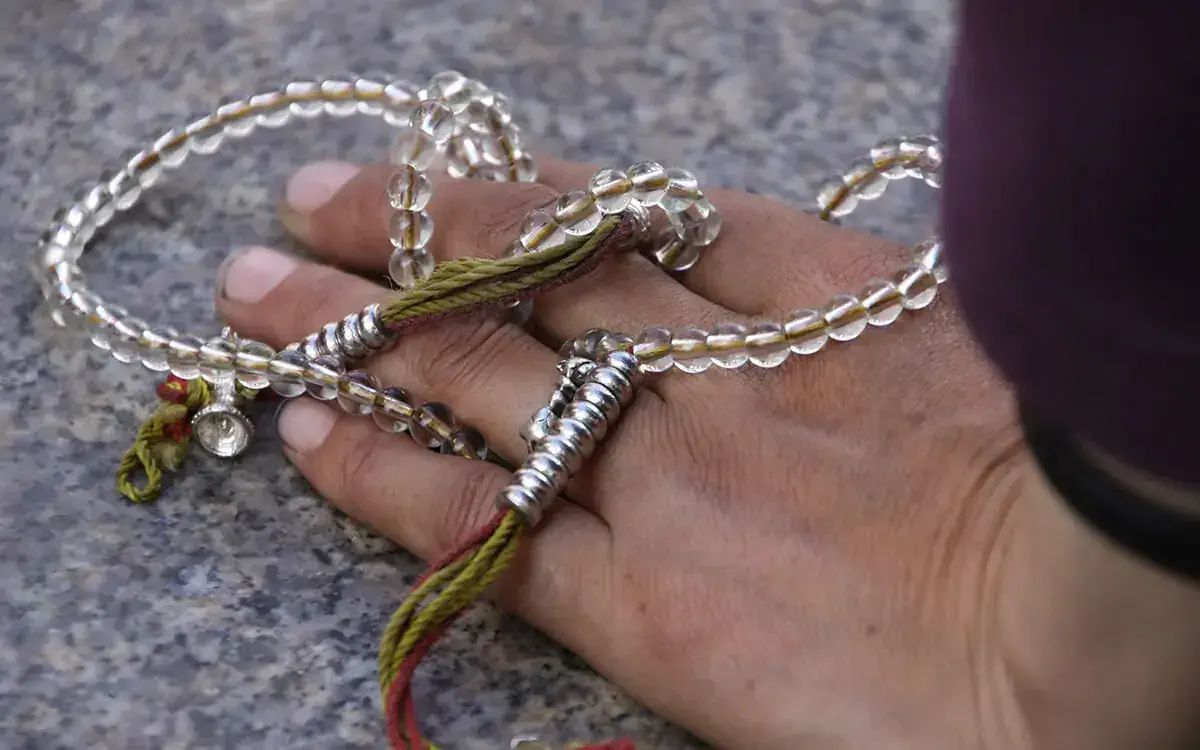
All photos © Maria Menzel
Note: These rates are based on search queries made on KAYAK.co.uk on July 21st, 2017. The prices are quoted in GBP. Flight prices are based on results for a return economy flight search. Hotel prices are for double occupancy and include taxes and fees. Prices are subject to change, may vary, or no longer be available.

